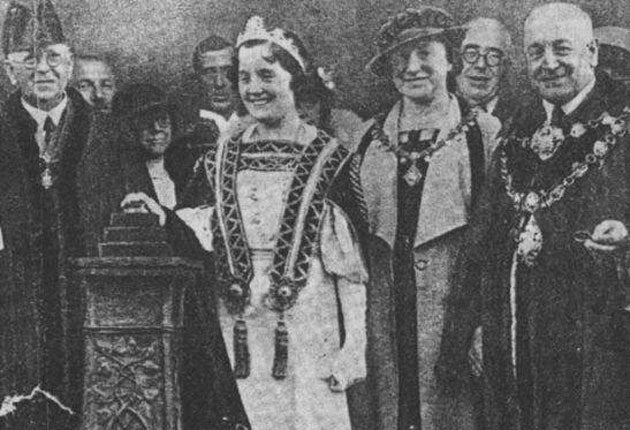Audrey Mossom: Railway Queen of Great Britain who was entertained by Stalin on a peace trip to the Soviet Union

Your support helps us to tell the story
From reproductive rights to climate change to Big Tech, The Independent is on the ground when the story is developing. Whether it's investigating the financials of Elon Musk's pro-Trump PAC or producing our latest documentary, 'The A Word', which shines a light on the American women fighting for reproductive rights, we know how important it is to parse out the facts from the messaging.
At such a critical moment in US history, we need reporters on the ground. Your donation allows us to keep sending journalists to speak to both sides of the story.
The Independent is trusted by Americans across the entire political spectrum. And unlike many other quality news outlets, we choose not to lock Americans out of our reporting and analysis with paywalls. We believe quality journalism should be available to everyone, paid for by those who can afford it.
Your support makes all the difference.Audrey Mossom, who has died aged 88, won considerable fame when, in 1935, as a vivacious 15-year-old schoolgirl, she was crowned Railway Queen of Great Britain. Subsequently one of the earliest celebrities to switch-on Blackpool's famous illuminations, not once, but twice, she also undertook a highly controversial peace trip to Russia, where, among others, she met Joseph Stalin.
The youngest of three sisters, Audrey Mossom spent her formative years on the Fylde Coast amid the bright lights of Blackpool. There, her mother kept a small guest house, while her father, very much in the family tradition, worked as a guard on the London North Western Railway Company. Having made her stage debut as a dancer in the famous Blackpool Tower Ballet, she soon progressed to regular touring engagements with Madame Winstanley's Manchester School of Dance.
In August 1935, in front of the 70,000 visitors attending the hugely-popular Railway Carnival and Pageant held at Belle Vue, Manchester, she was ceremonially crowned the 10th Railway Queen of Great Britain. At the heart of this huge annual extravaganza, a unique blend of social, sporting and cultural activity, lay that most Utopian of ideals, comradeship among railwaymen of all countries. This was reflected in her International Chain of Office to which, that year, had been added a symbolic Link of Peace from Palestine.
Intensely proud of her success, Blackpool instantly bestowed upon Audrey their highest accolade, an invitation to become only the second celebrity to switch on the town's world famous illuminations. Thus, on Saturday 14 September, 1935, resplendent in full ceremonial regalia, she braved the autumn showers to address the large crowd assembled outside the Town Hall: "I hope the Blackpool Illuminations will illuminate the path of peace which the League of Nations is so nobly following on behalf of all young people throughout the world," she said. "May they symbolise industrial and international peace."
Then, on the stroke of seven o'clock, in a moment later famously immortalised on canvas, she pressed down on the big chrome button and, to loud cheers, the illuminations excitedly burst into life. It would be an exercise she would poignantly repeat 50 years later, when, in 1985, she was specially invited back to assist the actress Joanna Lumley with that year's switch-on.
Proving somewhat more controversial at the time was a special invitation in the summer of 1936 for her to undertake a visit to the Soviet Union. The question was, should she attend as a British schoolgirl who was an ambassador for peace or as the Railway Queen of Great Britain, forging a link of peace with the workers of the Soviet Union? In the event, following high-level discussions at the heart of government, it was decided that she go as the Railway Queen. Arriving in Minsk, she travelled to Moscow in a special train sent by Stalin. There, feted by Russian railway workers, she had discussions with all the leading politicians of the day, including Stalin himself. It was Lenin's widow, Nadezhda Krupskaia, who presented her with a magical Mat-ryoshka doll.
Back in England, having helped crown her successor, she went back to school to complete her education. Before too long, however, she was able to return to her first love, the stage, and a successful career as a professional dancer.
Kenneth Shenton
Elsie Audrey Mossom, Railway Queen of Great Britain: born Preston, Lancashire 3 September 1920; twice married (three sons, three daughters); died Hastings, Sussex 1 September 2009.
Subscribe to Independent Premium to bookmark this article
Want to bookmark your favourite articles and stories to read or reference later? Start your Independent Premium subscription today.
Join our commenting forum
Join thought-provoking conversations, follow other Independent readers and see their replies
Comments